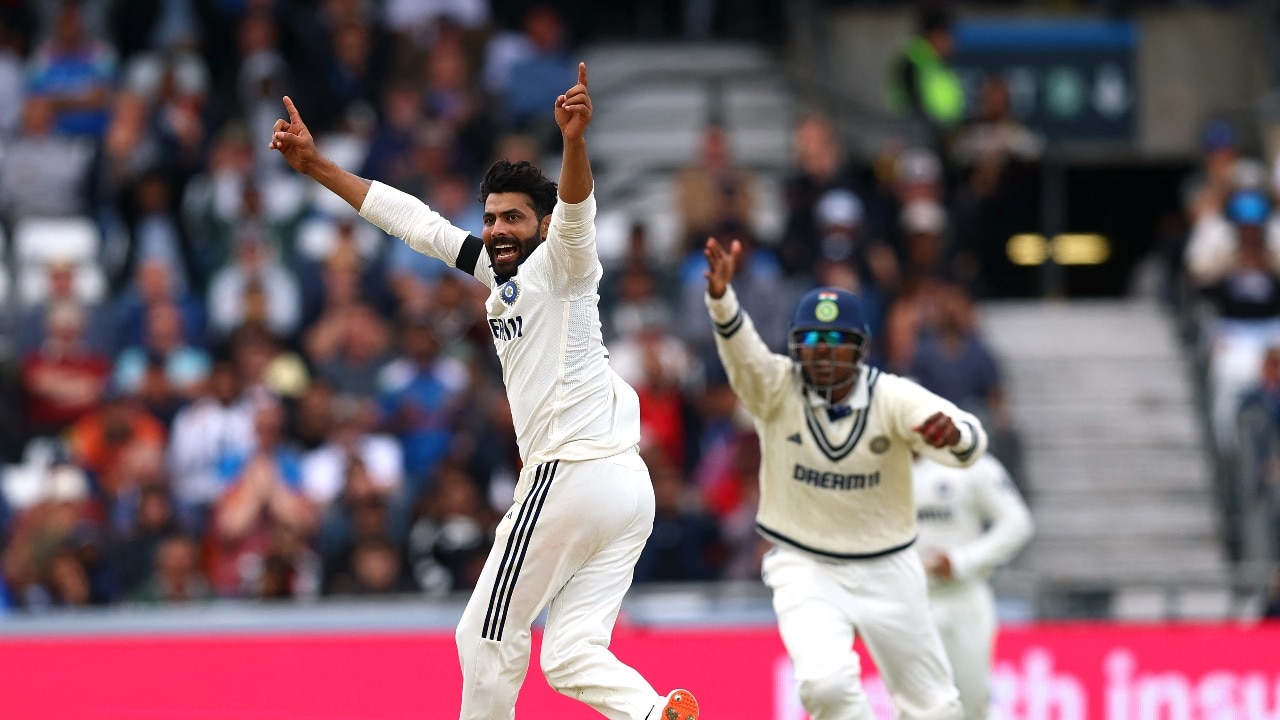Is Ravindra Jadeja, the all-rounder, a no-show in SENA Tests?

At 36, Ravindra Jadeja still wears the Indian Test cap with the pride of a man who knows what it means. A seasoned campaigner, a tireless competitor with both bat and ball, and once the glue that held India's five-bowler strategy together, Jadeja's place in Indian cricket history is secure. He has been the quiet constant, always in the background, always delivering.advertisementYet time and conditions test even the steadiest performers. For all his match-winning feats at home and in the subcontinent, Jadeja's effectiveness as a game-changer has diminished noticeably in SENA (South Africa, England, New Zealand, Australia) conditions. The first Test at Headingley was a sobering reminder.Across 47 overs in Leeds, Jadeja gave away 172 runs and managed just one wicket - that of England captain Ben Stokes, who fell to a miscued reverse sweep. With the bat, he contributed 11 in the first innings and an unbeaten 25 in the second innings that showed grit but had little impact on the match's course. His second-innings resistance was admirable, but it came too late, with India already staring at defeat.What raised eyebrows more than his batting, though, was how blunt he looked with the ball - on a flat pitch, where India desperately needed a spark. Jadeja has built a career on control, accuracy, and relentless pressure. But in Leeds, he seemed to be searching - not just for wickets, but for rhythm, for presence.NUMBERS PAINT A GRIM PICTUREadvertisementThe numbers tell a difficult story. In 480 overs bowled in England, Jadeja has picked up just 28 wickets at an average of 48.07 - a long way off from the dominance he's displayed in Asian conditions. In New Zealand, the returns are leaner still - five wickets in 104 overs at an average of 60.60. Australia offers some relief: 18 wickets in 189.3 overs at 29.05. South Africa stands out as his most productive SENA tour, with six wickets in 62 overs at an average of 25. But taken together, the figures reflect the reality - Jadeja hasn't quite cracked the overseas code with ball in hand.Now place that alongside his overall career: 324 wickets and 3406 runs in 81 Tests, four centuries, and a bowling average that hovered in the low 20s through his prime. The gulf between those numbers and his SENA record is hard to ignore. Of late, Jadeja hasn't been the impact player India have leaned on so often; overseas, he's looked more like a supporting act than the central force he once was.This hasn't come out of the blue. During the 2023-24 Border-Gavaskar Trophy in Australia, he looked off-colour. In three Tests, he averaged 27 with the bat and 54.50 with the ball, taking just four wickets across the series. The spark seemed missing - the fizz off the pitch, the drift through the air, the rhythm in his spells. Batters negotiated him with ease, rarely under pressure.advertisementEven at home against New Zealand, where conditions usually favour his craft, Jadeja struggled to leave a mark. He scored 105 runs at 17.50 and rarely looked threatening with the ball. India didn't need just a presence - they needed a game-changer. Instead, what they got was a seasoned pro, battling to stay relevant in a role that once came so naturally.SELECTION DILEMMAAt Leeds, India backed Ravindra Jadeja once again - a vote of trust in a man who has delivered for years. Alongside him, Shardul Thakur was picked as the seam-bowling all-rounder, while Kuldeep Yadav, seen as the best bet to exploit any turn on offer, was left out. In hindsight, the balance didn't work. England's left-handers - especially Ben Duckett - played Jadeja with ease, often reverse-sweeping him at will.Hard to miss was the image of Jadeja - standing mid-pitch, arms on hips, eyes searching for answers - a proud cricketer trying to summon a breakthrough that wouldn't come.advertisementGreg Chappell's post-match comments only sharpened the spotlight. Writing for ESPNcricinfo, he noted: "Jadeja is not a front-line spinner in English conditions. If his batting is considered good enough, he can be a support spinner; otherwise, a rethink is necessary." It was a harsh but pointed observation - one that reflects the dilemma facing the Indian think tank.Jadeja's place in the XI can no longer be taken for granted based on reputation alone. His batting, though dependable, hasn't been game-changing of late. And if the bowling doesn't threaten, India are left vulnerable in conditions where the smallest margins often decide matches.But replacing Jadeja is not a straightforward call. Washington Sundar, the closest like-for-like option in the squad - a left-handed batter with off-spin and a calm head - is still viewed with some scepticism by the team management, particularly on pitches that don't turn square. Axar Patel, another capable alternative, is currently out of contention. And none of the younger spin options have yet been convinced enough to be thrown into the deep end.The other option is to shift strategies - opt for Kuldeep Yadav, even if it means sacrificing some batting depth. At Headingley, his absence was palpable. As England's partnerships swelled, India lacked someone who could weave magic from the other end. Jadeja tried, but the breakthroughs never came.advertisementHAS THE ALL-ROUNDER TEMPLATE BROKEN?Between 2020 and mid-2024, Ravindra Jadeja was arguably the most complete all-rounder in world cricket. In 24 Tests during that period, he scored 1,192 runs at an average of 37.25, including three centuries. With the ball, he took 83 wickets at 22.84, claiming four five-wicket hauls.More than just numbers, it was his tactical utility-the ability to balance a side, plug gaps, and bring control-that allowed India to adopt a bold five-bowler strategy, a balance that worked seamlessly under the captaincies of Virat Kohli and Rohit Sharma.But form, like time, doesn't stand still. In recent months, that perfect equilibrium has grown harder to maintain. Jadeja's performances, especially overseas, have lacked the sharpness that once defined them. The team's approach has gradually shifted from aggressive combinations to more cautious ones. And while the faith in Jadeja hasn't disappeared, it now comes with caveats. The certainty of 2021 has given way to the realities of 2025. The aura remains, but the output is no longer guaranteed.advertisementNo one watching Ravindra Jadeja doubts his commitment. At 36, his fitness is still elite, his fielding remains among the best in the world, and his fighting spirit with the bat continues to show up when India need resistance. He's never been one to fade quietly - always in the thick of things, always competing.But elite sport has little room for sentiment. When performances dip, especially in both departments for an all-rounder, the questions inevitably come - not out of disregard, but out of the demands of the highest level.Is this the beginning of a quiet twilight for one of India's most storied all-rounders? Maybe. But if there's one thing Jadeja has shown time and again, it's his ability to rise just when the doubts grow loudest - a long spell that turns a match, a gritty 80 under pressure, or a direct hit from nowhere that swings momentum.- EndsPublished By: Akshay Ramesh Published On: Jul 1, 2025Tune In













